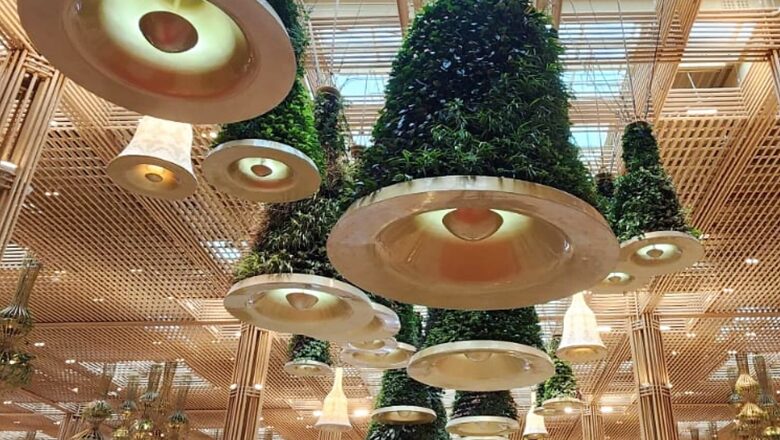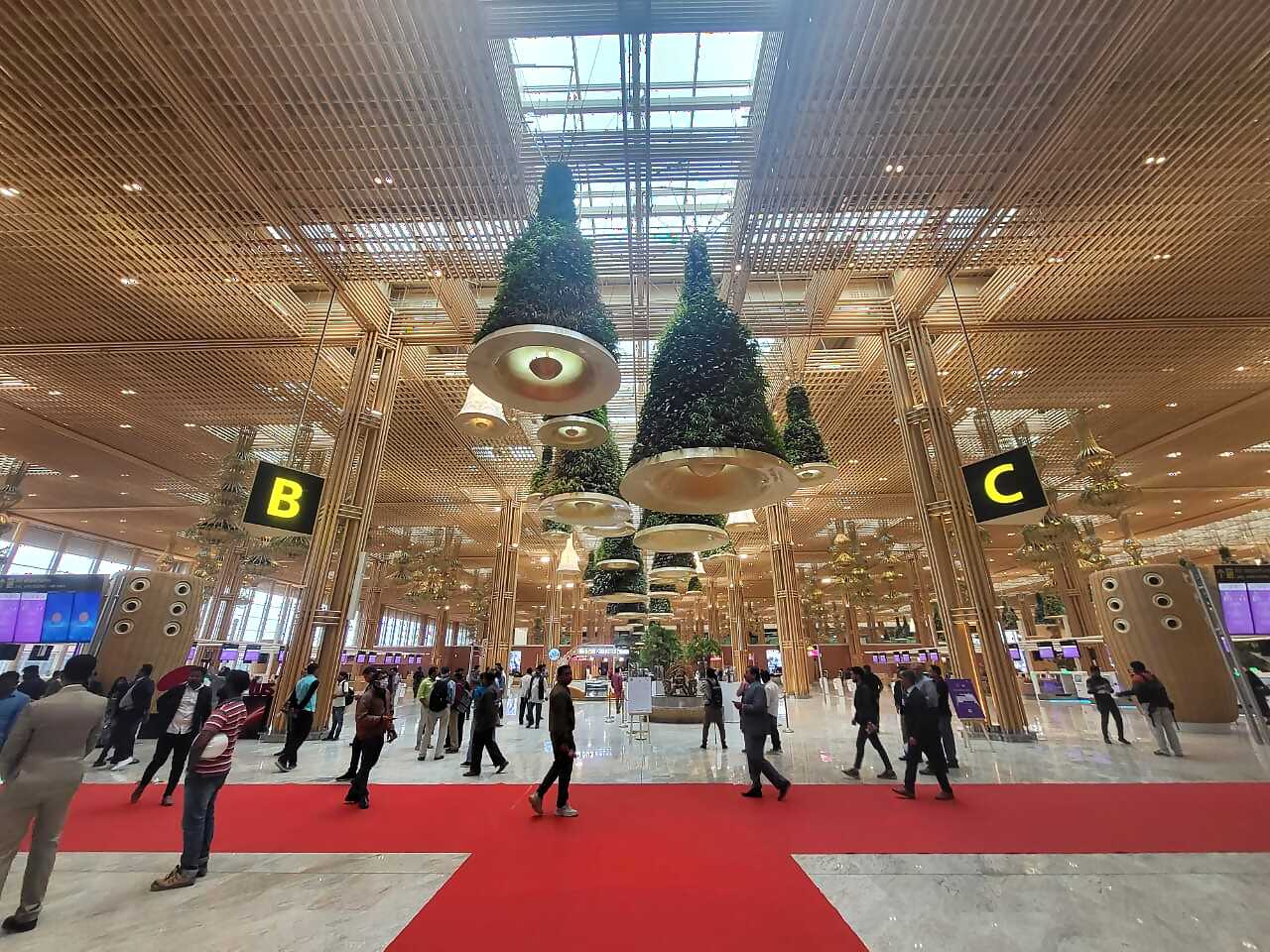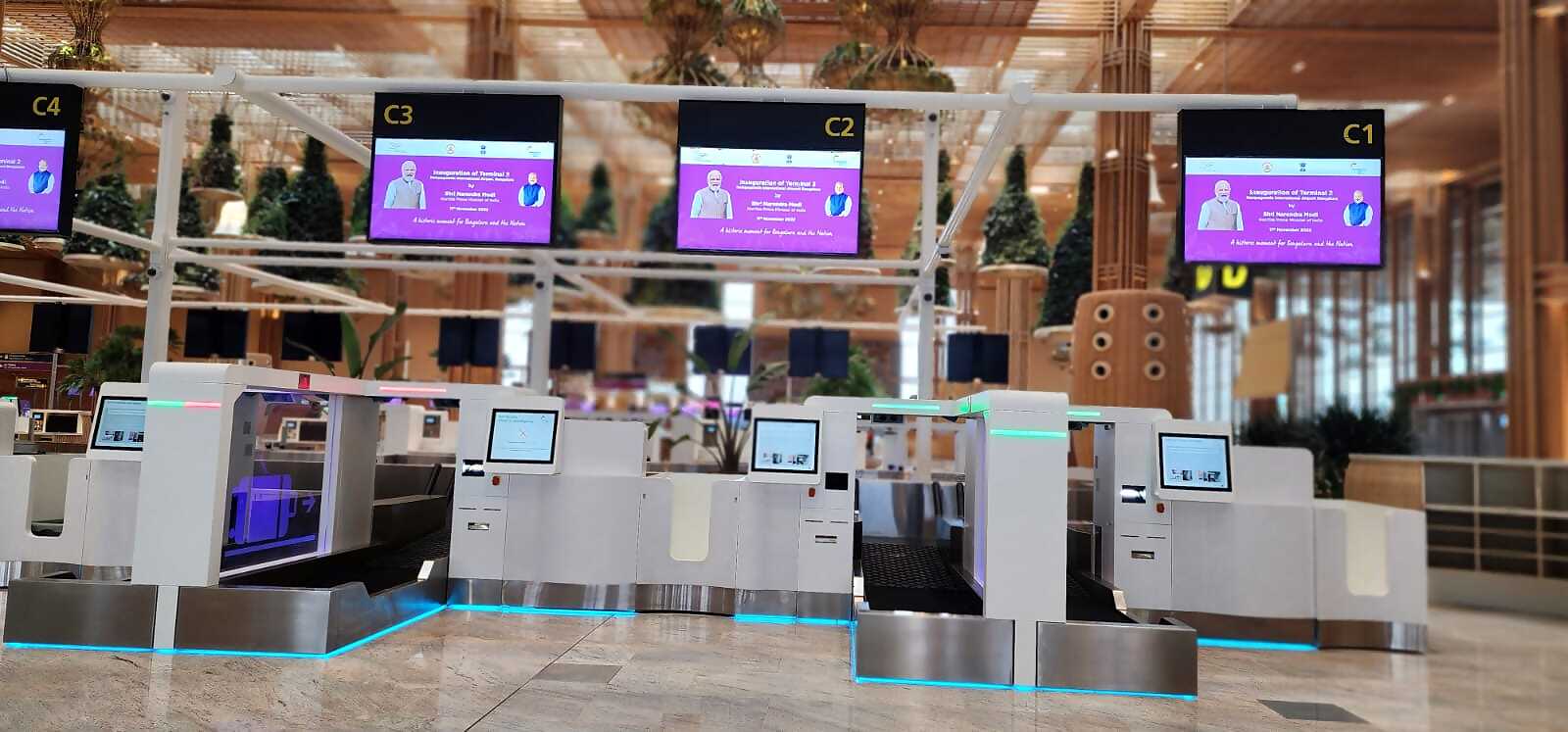
views
For those who have been beating Bengaluru’s traffic to reach the airport can now find a good reason to soothe their nerves as they fly in or out of the Kempegowda International Airport – ‘A Walk in the Garden’. Terminal 2, which was inaugurated by Prime Minister Narendra Modi on November 11, is not just a treat for the eyes but offers passengers seamless pre-arrival and departure procedures.
Aptly called ‘Terminal in a Garden’, Terminal 2 is also described as a ‘sensorium of wonders’. It is not just a garden of ideas that connects employees with its destinations but also reflects Karnataka’s distinctive culture.
The opulent, lush green terminal has much to offer to travellers. The immersive experience begins right from the point of entry with a well-ventilated landing area complete with earthy tones of brickwork, pear-shaped hanging lights combined with the gurgling of a water body in the vicinity, making the arrival at Terminal 2 quite an exquisite experience.
The opulent lush green sustainable energy ,eco friendly, technology driven Terminal in a Garden or T2 at the Kempegowda International #bengaluruairport @BLRAirport. @CNNnews18 @news18dotcom Here’s an inside look (part 1/3) @AmanKayamHai_ @KARTHIKSUB @AmeyaBhise pic.twitter.com/G9LN0riqeY— Rohini Swamy (@Rohini_Swamy) November 12, 2022
If the objective is to reflect the Garden City, then Bengaluru’s green cover, culturally vibrant and technologically savvy side have hit the mark. Built on the four guiding principles of sustainability, technology and innovation with a good mix of art and culture, T2 has not become a perfect example of how airports can be made to look futuristic and passenger friendly.

The rainforest inspired interiors infused with exotic trees, shrubs and plants, “contactless experience” use of facial scanning, automated maintenance among other unique features are Bengaluru airport’s jewels in the crown, which makes it the best in the country. The Bengaluru’s Terminal 2 is also India’s competition to the world’s best airport, Singapore’s Changi, which is known for its unique experiential features including its one of a kind nature-themed interiors.
Interestingly, the use of exotic trees and plants from other countries has been successfully designed at Bengaluru’s new terminal, just like Changi Airport, certainly takes the Indian airport experience to a new level.
“What makes T2 more special is not just its scale and size, but also the fact that it’s inspired by Bengaluru city. Built as a terminal in a garden, T2 reflects all that Bengaluru stands for — a green, modern, innovative, sustainable, and culturally rich city. Over the last 14 years, BLR Airport has evolved as the Gateway to South India and with this next phase of expansion, it aims to position the airport as the new Gateway to India,” Hari Marar, MD and CEO, Bangalore International Airport Limited (BIAL) told media.
The highlight of T2 is not just functioning as a transportation hub, but reflecting beauty, creativity and clever use of technology from ceiling to floor.
It will cater to another 25 million passengers, has 22 contact gates, 15 bus gates, 95 check in solutions & 17 security check lanes. A work of art and a camera’s true friend as its ‘picture perfect” @AmanKayamHai_ @AmeyaBhise @KARTHIKSUB @CNNnews18 @news18dotcom pic.twitter.com/nyBbvugvMb— Rohini Swamy (@Rohini_Swamy) November 12, 2022
At eye level, the terminal is filled with exotic plants from across Karnataka and India, some of the trees and plants have been imported. As you sweep your eyes upwards, huge bells potted with plants hanging from the ceiling bring out the opulence of the entire structure. The concept of the ceiling hanging garden is called bells and veils, and is the central focus of the travel hub.
Bamboo-covered skylights are cleverly designed to let light through reducing the use of power to light up the space and the bamboo-clad pillars add the earthy touch.
Housing mini gardens with local and rare plant and tree species like dragon trees (Dracaena Draco) and Cupressus varieties have been brought in from Spain and Italy. They were kept in a greenhouse to acclimatise to Bengaluru temperatures until they finally found a spot in the lush green interiors of T2.
Prasannamurti Desai, head of landscaping, BIAL, and an avid horticulturist, spoke about some of the unique trees at the location. “Some of the dragon trees are more than 100 years old and they are one of the oldest and most exotic trees in the world.”
Dragon trees are hugely popular among landscapers and can grow up to 12 metres in height and spread 5 metres across.
Skidmore, Owings & Merrill (SOM), the Chicago-based urban planning architecture firm has been involved in the planning and designing of this sustainability and wellness-driven terminal with a special focus on maximum ventilation, especially at a time when the world is still recovering from the pandemic.
The terminal has a 24,000-square-metre landscape filled with indigenous flora, bamboo-clad pillars and traditional Indian cane weavings at the ticket counters. The food pavilion has been lined with scented plants and many parts of the terminal’s landscape are filled with hanging plants and water bodies.
The terminal has 90 check-in counters with 34 self-drop baggage counters giving passengers a Parking-to-Boarding contactless’ journey. This was first tested at Terminal 1 during the Covid-19 outbreak and it effectively helped minimise contact between passengers and airport staff.

“There was a very good response to this procedure,” said Sampreeth Kotian, head of Terminal Operations, Terminal 2, to News18.
“Bells and veils was a concept we had decided when we came up with the design of the airport as we wanted passengers to get a sense of the grandeur and greenery that hits them as soon as they come in. If you look at the plants adorning the bells ans veils, many think they are nor natural. Trust me they are natural and we have more than 6 lakh plants brought I to this terminal. We want our passengers to feel the green ecosystem around them,” Kotian described to News18.
How different is from other airports? Kotian said, “We want to give complete control of the journey to the passengers and that’s why we started with the self baggage drop system. The experience makes it enjoyable and we tried this in T1, and the response was fantastic. Now, a lot of airlines are coming on board to use this technology,” he said.
Passengers can choose to either check in on their own or use the conventional method at the boarding ticket counters.
The implementation of the Digi Yatra biometric boarding system at the airport has shown how the passengers’ airport experience can be touched with technology at every step of the way. From the time the passenger arrives at the airport’s arrival area until boarding the aircraft, Digi Yatra is about using biometrics to make the check-in experience smooth and unhindered. It takes away the long queues for baggage check-ins, boarding passes or showing identity cards at different location of the airport as the passenger’s face is used as a single biometric token.
“It is so pretty, that one can only wish that every flight across the country, takes a pit stop at the Terminal 2 before flying out to its destination just so that one can soak in this beautiful experience. I love the technological advancements in the new terminal like automated bag drop and biometric boarding. The art which is going to be displayed across the terminal is going to lend a soul to the concrete building,” Hrish Thota, travel blogger, told News18.
This state-of-the-art terminal in India’s Silicon Capital is a beautiful and effective balance of sustainability and technology. It operates on an IoT platform, which helps in managing, collating information and analysing data from various devices, equipment and facilities across the airport. For example, the beautiful bells and veils concept of ceiling hanging gardens is monitored and maintained by applications that are driven by IoT. Besides, the water meters, energy sensors, temperature and weather monitors, HVAC and eclectically equipment are managed by this IoT solution platform.
The airport has been friendly for the visually impaired with several signages made in Braille along with tactile flooring making the airport a lot more user-friendly.
Embedding the theme of ‘Naurasa’ along with the 60 artworks made by 43 artists that represent the heritage and culture of Karnataka and broader Indian ethos add special charm to the interiors.
Read all the Latest India News here




















Comments
0 comment